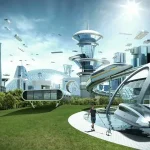Platforms evolve fast. Yet when a platform gets interactive and responsive, users notice. The RaceJeet Real-Time experience delivers a live, seamless environment where actions reflect instantly. In this blog we take a deep dive into the tech behind the scenes of RaceJeet’s live interaction. We’ll show how the system evolved, what components power it, and what it means for you as a user.
From Static to Live: The Evolution of RaceJeet Digital Interaction
At the beginning, many platforms offered basic layouts and simple menus. The era of “read-and-click” dominated. But as users demanded more action and engagement, the world shifted. The concept described in research as “digital interaction evolution” highlights how platforms moved from passive pages to active communities.
In the same way, the RaceJeet Digital Interaction model started with simpler modules and has now grown into live, dynamic formats. When you log in today you’ll experience the Real-Time system where every second counts. Accordingly, the digital interaction evolution reflects this shift from static to interactive formats. This change signals a deeper commitment to responsiveness and user focus.
What Powers the Real-Time Experience at RaceJeet
When you enter a live session on RaceJeet you have interaction with the Real-Time engine. Under the hood, several key technologies are painted collectively: persistent connections (often WebSockets), event-driven servers, actual-time facts that go with the flow, and optimisation for tool and network versions.
Persistent WebSocket-style connections make up a big part of the backbone. These allow the platform to push updates to your screen instantly and listen for your input without delay. In other words, the system supports two-way communication in real-time. At the same time, the architecture must scale so that many users interacting at once do not slow things down. This is part of how live interactive technology operates.
In addition, the platform must handle data streams, user states, leaderboards and live updates. Because of this the technology behind interactivity includes both infrastructure and UI design. Efficient data routing, minimal latency, and high availability all matter. Consequently the Real-Time experience stays smooth for everyone.
What It Means for Your Engagement
Because the real-time system works so well, your interaction with RaceJeet becomes richer. The term Real-Time isn’t just a feature, it’s the mode of operation. When you click, respond or switch modules the system reflects your action quickly. That leads to higher real-time user engagement.
You also get the benefit of live community activity. Seeing others respond, watching a leaderboard update or reacting in real time brings the platform alive. Furthermore, the interactive platform features come to life when time matters and updates appear fast. You don’t wait for batch updates, you see movement as it happens. All of this means your session feels more active, more participative and more tuned to your input.
What Changed: Classic Interaction vs Modern Formats
In earlier versions the “RaceJeet Digital Interaction” model may have been more basic static screens, fewer live updates, less real-time signalling. That matches what many digital platforms experienced as the industry matured, moving from “Web 1.0” style to interactive formats.
Now the modern Real-Time setup embraces live updates, fluid interfaces and multi-device support. The platform’s evolution mirrors the classic vs modern interaction trend where classic formats emphasised simplicity and modern ones emphasise responsiveness and interactivity. Because of this shift, the user experience now includes more frequent updates, higher responsiveness and a sense of real-time presence.
Challenges Behind the Scenes
Delivering the RaceJeet Real-Time experience is not without challenge. Technical issues such as network instability, device compatibility, session scaling and data consistency all matter. The platform must manage latency, ensure messages reach users promptly, and avoid bottlenecks.
Moreover, when many users are online at once, the system must distribute load and keep live modules running smoothly. The digital interaction evolution also means that the backend infrastructure needs constant upgrading. In addition, maintaining the interactive platform features across old and new devices poses compatibility issues. However, these challenges are part of the ongoing development and improvement that enables the real-time system.
What Users Should Look For
As a user on RaceJeet the “RaceJeet Real-Time” system brings practical implications. First, you’ll notice minimal waiting when switching modes or submitting responses. Second, you can engage with live formats more deeply since every action counts quickly. Third, you’ll benefit from interactive platform features when the platform shows updated scores, live prompts or dynamic changes.
To leverage this, make sure your connection is stable, your device is ready and you are logged into the latest version of the app or site. Because the real‐time engine works best in optimal conditions, your setup matters. By aligning your device environment with the system’s capability you make the most of the Real-Time experience.
Looking Ahead: What Next for RaceJeet Digital Interaction
Going forward the “RaceJeet digital interaction evolution” may continue with richer features: more live modules, advanced real-time analytics, enhanced community interaction and multi-device synchronisation. The term interactive experience changes hints at these possibilities. Perhaps more live host-led sessions, augmented tracking, instant feedback dashboards and improved cross-platform flow.
As the world of real-time interaction advances and as other platforms shift toward “live formats” and immersive sessions the interactive platform features will likely get stronger and more dynamic. For you, this means staying updated and exploring new formats as they arrive. The core Real-Time engine is already set and the next growth phase may deliver even more interactivity.
Final Thoughts
The journey of RaceJeet Digital Interaction has taken the platform from basic static interfaces to a live, responsive and engaging environment. The Real-Time system delivers the kind of interaction users expect today: prompt feedback, live updates and community responsiveness. The digital interaction evolution is visible in every session you join. By understanding how the generation works and what it means for your engagement, you could better enjoy the gadget. So subsequent time you log in, take into account: lots is occurring backstage to make your session experience alive and you’re part of that stay drift.








